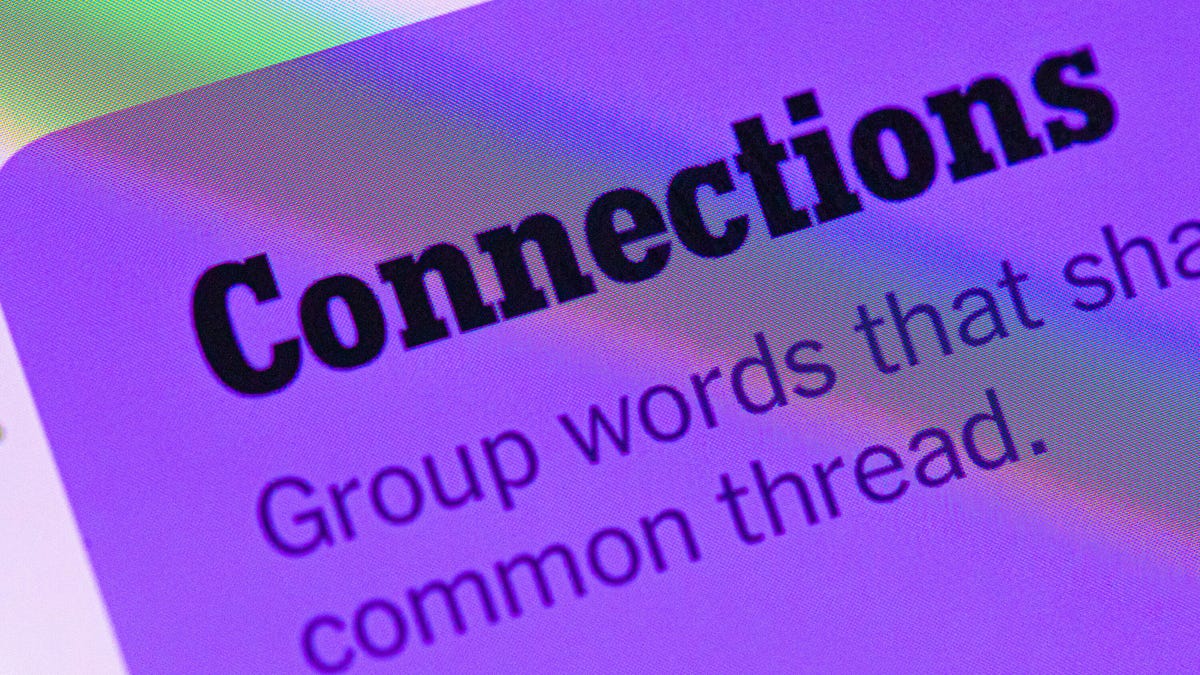Technologies
Want to Buy a New iPhone? You Should Probably Wait
Apple is slated to unveil its next iPhone in the coming weeks.

If you’re ready to upgrade your iPhone, you’ll probably want to hang tight.
Apple tends to unveil its new phones in September, as it did last year with the iPhone 16 lineup. It’s expected to release the iPhone 17 series at the same time this year. So, if you can wait a couple more months, you’ll either score the latest device or get a discount on previous models.
Newer iPhones tend to include camera and processor upgrades, as well as new features to make them more enticing. For instance, the iPhone 14 Pro models introduced Dynamic Island, the iPhone 15 Pro and Pro Max debuted the Action button, and the iPhone 16 series added the Camera Control button and Apple Intelligence across the full lineup, rather than on just the Pro models.
According to leaks and reports, the iPhone 17 lineup, which Apple technically has yet to confirm, could have a fresh camera setup and new color options and, perhaps most notably, could include a slimmer version of the iPhone to compete with similar offerings like Samsung’s Galaxy S25 Edge. It’ll likely arrive with the just-announced iOS 26, which features Apple’s biggest software design shakeup in over a decade.
You can check out our iPhone 17 rumor roundup for more on what might be coming in the fall.
Will waiting for the iPhone 17 be worth it?
Overall, iPhone upgrades over the last several years have been relatively modest. And it’s likely, based on rumors, that the iPhone 17 lineup will generally follow that mold.
But even with more moderate changes, now’s not a good time to buy a new iPhone, if you can help it. We’re less than a couple of months away from the anticipated launch of Apple’s next smartphone. So if you hold on a little longer, you can snag that flashy new device when it drops, likely in September, based on previous iPhone launches.
If you buy a new iPhone 16 now, you’ll probably pay full price for something that in just a couple months’ time will technically be outdated (the harsh reality of the annual phone release cycle). And even if you get a good deal through your carrier now, if you stick it out just a bit longer, you could potentially get an even more lucrative deal once the iPhone 17 drops and carriers ramp up their promotions.
If anything, waiting to see what the iPhone 17 has in store could at least help you confirm whether going with the newest device or an older one like the iPhone 16 or 15 is worth it. After all, if the differences are minimal, you might as well save a couple of hundred dollars by choosing a previous model. And chances are — if the iPhone 17 is anything like the last several iPhones — no one will even be able to tell.
But what about tariffs?
One big unknown is whether tariffs will affect the price of the iPhone 17, which could sway your purchasing decisions. While smartphones and computers were given an exemption from President Donald Trump’s more extensive tariffs, he recently said Apple will still have to pay a 25% tariff on iPhones made outside the US. This would almost certainly lead to a price hike.
But even without tariffs, the iPhone is due for a markup, according to CNET’s Patrick Holland. «The iPhone hasn’t had a price hike in five years and is due for one,» he writes. «Historically, that’s the longest stretch of time the company has gone without an increase.» (You can check out more of his thoughts here.)
So, is it still worth waiting for the iPhone 17? It depends. If you were already planning on purchasing a new iPhone and can’t wait much longer, I can understand panic-buying now. But bear in mind you’ll still likely pay full price for an iPhone 16 model that will be worth less the moment the iPhone 17 drops. So, you might be coughing up more for an iPhone 17, but at least you’ll get more bang for your buck.
So, when’s the best time to buy a new iPhone?
There’s not necessarily a «best» time to buy a new iPhone, since prices are pretty consistent throughout the year, but the fall is an enticing option. That’s when Apple introduces its latest slate of iPhones, and when carriers are eager to attract new customers and lure in business with abundant trade-in deals and promotions. And again, even if you don’t want the latest and greatest iPhone, you can at least snag an older version at a discount right after the iPhone 17 drops.
In general, we recommend upgrading to a new phone if your existing one is more than two generations old. You can typically wring more life out of your device, but if you want to stay on top of the latest features like Apple Intelligence, leveling up is the way to go. And with just a few more months left before the anticipated drop of the iPhone 17, you might as well see what fresh capabilities Apple’s got up its sleeve.
Technologies
Today’s NYT Connections Hints, Answers and Help for Dec. 24, #927
Here are some hints and the answers for the NYT Connections puzzle for Dec. 24 #927

Looking for the most recent Connections answers? Click here for today’s Connections hints, as well as our daily answers and hints for The New York Times Mini Crossword, Wordle, Connections: Sports Edition and Strands puzzles.
Today’s NYT Connections puzzle is kind of tough. Ooh, that purple category! Once again, you’ll need to look inside words for hidden words. Read on for clues and today’s Connections answers.
The Times has a Connections Bot, like the one for Wordle. Go there after you play to receive a numeric score and to have the program analyze your answers. Players who are registered with the Times Games section can now nerd out by following their progress, including the number of puzzles completed, win rate, number of times they nabbed a perfect score and their win streak.
Read more: Hints, Tips and Strategies to Help You Win at NYT Connections Every Time
Hints for today’s Connections groups
Here are four hints for the groupings in today’s Connections puzzle, ranked from the easiest yellow group to the tough (and sometimes bizarre) purple group.
Yellow group hint: Cash out.
Green group hint: Chomp
Blue group hint: Walleye and salmon.
Purple group hint: Make a musical sound, with a twist.
Answers for today’s Connections groups
Yellow group: Slang for money.
Green group: Masticate.
Blue group: Fish.
Purple group: Ways to vocalize musically plus a letter.
Read more: Wordle Cheat Sheet: Here Are the Most Popular Letters Used in English Words
What are today’s Connections answers?
The yellow words in today’s Connections
The theme is slang for money. The four answers are bacon, bread, cheese and paper.
The green words in today’s Connections
The theme is masticate. The four answers are bite, champ, chew and munch.
The blue words in today’s Connections
The theme is fish. The four answers are char, pollock, sole and tang.
The purple words in today’s Connections
The theme is ways to vocalize musically plus a letter. The four answers are hump (hum), rapt (rap), singe (sing) and whistler (whistle).
Don’t miss any of our unbiased tech content and lab-based reviews. Add CNET as a preferred Google source.
Toughest Connections puzzles
We’ve made a note of some of the toughest Connections puzzles so far. Maybe they’ll help you see patterns in future puzzles.
#5: Included «things you can set,» such as mood, record, table and volleyball.
#4: Included «one in a dozen,» such as egg, juror, month and rose.
#3: Included «streets on screen,» such as Elm, Fear, Jump and Sesame.
#2: Included «power ___» such as nap, plant, Ranger and trip.
#1: Included «things that can run,» such as candidate, faucet, mascara and nose.
Technologies
Today’s NYT Mini Crossword Answers for Wednesday, Dec. 24
Here are the answers for The New York Times Mini Crossword for Dec. 24.

Looking for the most recent Mini Crossword answer? Click here for today’s Mini Crossword hints, as well as our daily answers and hints for The New York Times Wordle, Strands, Connections and Connections: Sports Edition puzzles.
Need some help with today’s Mini Crossword? I’m Irish-American, but yet 6-Down, which involves Ireland, stumped me at first. Read on for all the answers.. And if you could use some hints and guidance for daily solving, check out our Mini Crossword tips.
If you’re looking for today’s Wordle, Connections, Connections: Sports Edition and Strands answers, you can visit CNET’s NYT puzzle hints page.
Read more: Tips and Tricks for Solving The New York Times Mini Crossword
Let’s get to those Mini Crossword clues and answers.
Mini across clues and answers
1A clue: Wordle or Boggle
Answer: GAME
5A clue: Big Newton
Answer: ISAAC
7A clue: Specialized vocabulary
Answer: LINGO
8A clue: «See you in a bit!»
Answer: LATER
9A clue: Tone of many internet comments
Answer: SNARK
Mini down clues and answers
1D clue: Sharks use them to breathe
Answer: GILLS
2D clue: From Singapore or South Korea, say
Answer: ASIAN
3D clue: Large ocean ray
Answer: MANTA
4D clue: ___ beaver
Answer: EAGER
6D clue: Second-largest city in the Republic of Ireland, after Dublin
Answer: CORK
Don’t miss any of our unbiased tech content and lab-based reviews. Add CNET as a preferred Google source.
Technologies
Quadrantids Is a Short but Sweet Meteor Shower Just After New Year’s. How to See It
This meteor shower has one of the most active peaks, but it doesn’t last for very long.

The Quadrantids has the potential to be one of the most active meteor showers of the year, and skygazers won’t have long to wait to see it. The annual shower is predicted to reach maximum intensity on Jan. 3. And with a display that can rival Perseids, Quadrantids could be worth braving the cold to see it.
Don’t miss any of our unbiased tech content and lab-based reviews. Add CNET as a preferred Google source.
The show officially begins on Dec. 28 and lasts until Jan. 12, according to the American Meteor Society. Quadrantids is scheduled to peak on Jan. 2-3, when it may produce upwards of 125 meteors per hour. This matches Perseids and other larger meteor showers on a per-hour rate, but Quadrantids also has one of the shortest peaks at just 6 hours, so it rarely produces as many meteors overall as the other big ones.
The meteor shower comes to Earth courtesy of the 2003 EH1 asteroid, which is notable because most meteor showers are fed from comets, not asteroids. Per NASA, 2003 EH1 is a near-Earth asteroid that orbits the sun once every five and a half years. Science posits that 2003 EH1 was a comet in a past life, but too many trips around the sun stripped it of its ice, leaving only its rocky core. The Earth runs through EH1’s orbital debris every January, which results in the Quadrantids meteor shower.
How and where to see Quadrantids
Quadrantids is named for the constellation where its meteors appear to originate, a point known as the radiant. This presents another oddity, as the shower originates from the constellation Quadrans Muralis. This constellation ceased to be recognized as an official constellation in the 1920s and isn’t available on most publicly accessible sky maps.
For the modern skygazer, you’ll instead need to find the Bootes and Draco constellations, both of which contain stars that were once a part of the Quadrans Muralis. Draco will be easier to find after sunset on the evening of Jan. 2, and will be just above the horizon in the northern sky. Bootes orbits around Draco, but will remain under the horizon until just after 1 a.m. local time in the northeastern sky. From that point forward, both will sit in the northeastern part of the sky until sunrise. You’ll want to point your chair in that direction and stay there to see meteors.
As the American Meteor Society notes, Quadrantids has a short but active peak, lasting around 6 hours. The peak is expected to start around 4 p.m. ET and last well into the evening. NASA predicts the meteor shower to start one day later on Jan. 3-4, so if you don’t see any on the evening of Jan. 2, try again on Jan. 3.
To get the best results, the standard space viewing tips apply. You’ll want to get as far away from the city and suburbs as possible to reduce light pollution. Since it’ll be so cold outside, dress warmly and abstain from alcoholic beverages, as they can affect your body temperature. You won’t need any binoculars or telescopes, and the reduced field of view may actually impact your ability to see meteors.
The bad news is that either way, the Quadrantids meteor shower coincides almost perfectly with January’s Wolf Moon, which also happens to be a supermoon. This will introduce quite a lot of light pollution, which will likely drown out all but the brightest meteors. So, while it may have a peak of over 100 meteors per hour, both NASA and the AMS agree that the more realistic expectation is 10 or so bright meteors per hour.
-

 Technologies3 года ago
Technologies3 года agoTech Companies Need to Be Held Accountable for Security, Experts Say
-

 Technologies3 года ago
Technologies3 года agoBest Handheld Game Console in 2023
-

 Technologies3 года ago
Technologies3 года agoTighten Up Your VR Game With the Best Head Straps for Quest 2
-

 Technologies4 года ago
Technologies4 года agoBlack Friday 2021: The best deals on TVs, headphones, kitchenware, and more
-

 Technologies4 года ago
Technologies4 года agoVerum, Wickr and Threema: next generation secured messengers
-

 Technologies4 года ago
Technologies4 года agoGoogle to require vaccinations as Silicon Valley rethinks return-to-office policies
-

 Technologies4 года ago
Technologies4 года agoOlivia Harlan Dekker for Verum Messenger
-

 Technologies4 года ago
Technologies4 года agoiPhone 13 event: How to watch Apple’s big announcement tomorrow
